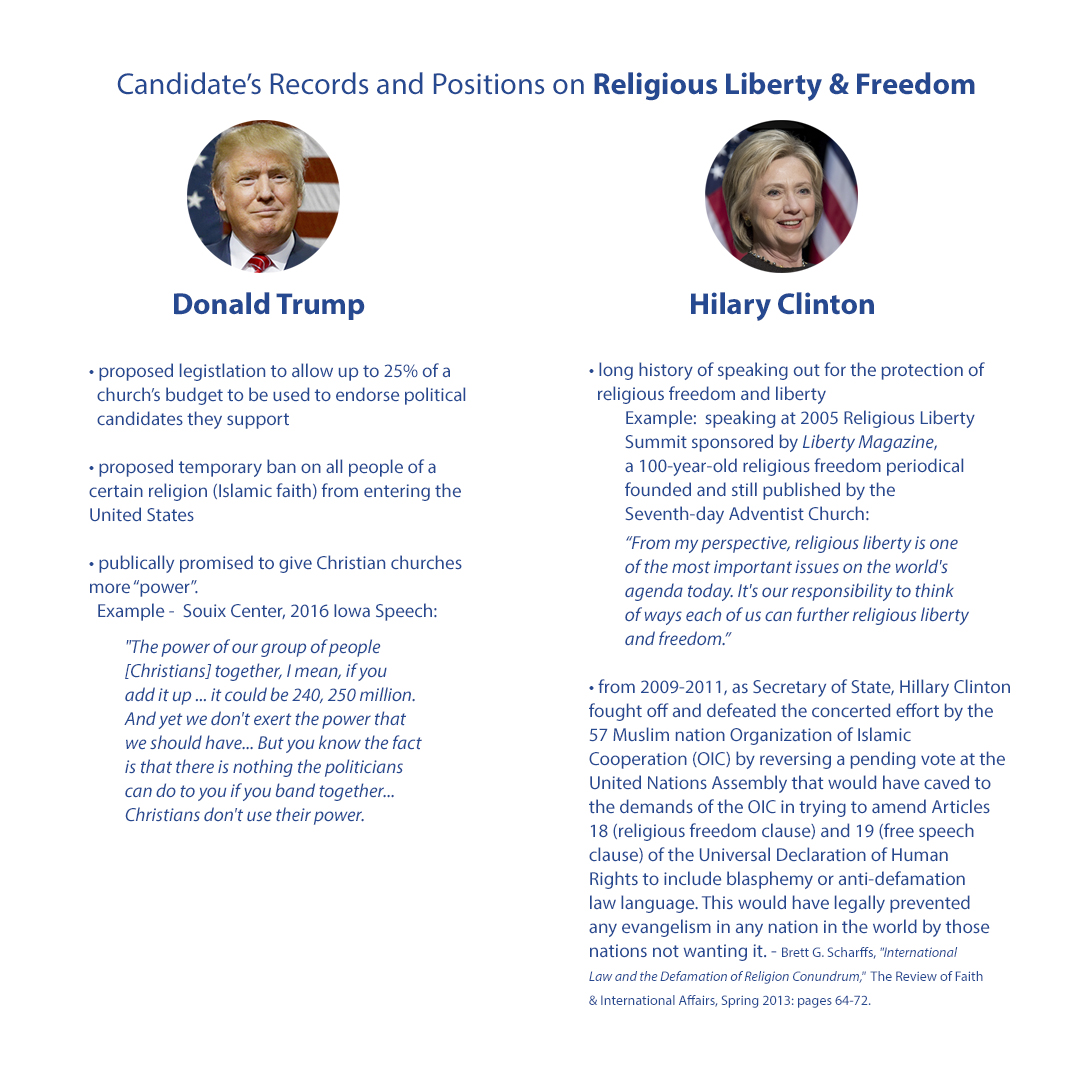Religious liberty has long been a cornerstone of American democracy, ensuring that individuals can freely practice their faith without government interference. As voters evaluate presidential candidates, understanding their records and positions on this critical issue can provide insight into how they might govern.
This image contrasts the approaches of Donald Trump and Hillary Clinton on religious freedom. While both candidates have addressed this issue, their priorities and policies reflect distinct perspectives on what religious liberty should look like in practice.
Donald Trump: Expanding Power for Christian Churches
During his campaign and presidency, Donald Trump focused on increasing the political influence of Christian churches. His proposals included:
- Allowing churches to endorse political candidates by allocating up to 25% of their budget for such activities.
- Imposing a temporary travel ban that specifically targeted people of the Islamic faith, restricting their entry into the U.S.
- Promising to give Christian churches more power, urging Christians to leverage their collective influence in politics. In a 2016 speech in Iowa, he emphasized that Christians have not been using their power effectively and encouraged them to unite politically.
Trump’s approach to religious liberty often prioritized Christian influence in government and policymaking, raising debates about the separation of church and state.
Hillary Clinton: Defending Religious Freedom for All
Hillary Clinton’s record reflects a broad commitment to protecting religious freedom across all faiths, both in the U.S. and internationally. Key highlights include:
- A long history of advocating for religious liberty, including a speech at the 2005 Religious Liberty Summit hosted by Liberty Magazine, a publication associated with the Seventh-day Adventist Church. She emphasized that religious liberty is a global issue and a shared responsibility.
- Defending religious freedom on the world stage as Secretary of State (2009–2011). She fought against efforts by the Organization of Islamic Cooperation (OIC) to pass a United Nations resolution that would have severely restricted evangelism and free speech on religious matters. The proposal sought to introduce anti-blasphemy and anti-defamation laws that could have criminalized religious expression. Clinton successfully opposed these efforts, preserving the religious freedom protections outlined in the Universal Declaration of Human Rights.
Her work demonstrated a commitment to protecting religious freedom not only for Christians but for all faiths, ensuring that government policies did not favor one group over another.
What This Means for Voters
The contrast between these two approaches raises important questions for voters who care about religious liberty:
- Should religious freedom be about empowering a particular faith (such as Christianity) in politics, or should it focus on ensuring equal protections for all religions?
- How do policies that restrict certain religious groups (e.g., a Muslim travel ban) align with America’s founding principles of religious freedom?
- Should churches be more involved in politics, or should they maintain a separation to prevent government overreach into religious matters?
Religious liberty remains a defining issue in American democracy. As voters consider future elections, it is essential to reflect on what kind of leadership best upholds the principles of freedom, tolerance, and equal rights for all.
What are your thoughts on these contrasting views of religious liberty? Share your perspective in the comments below!

Leave a Reply